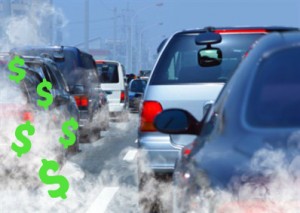Fleet operations are costly. From fuel and maintenance to upgrades and eventual replacements, keeping your fleet up-and-running requires a significant financial investment. In many cases, however, fleet managers are over-spending on these operations — often in ways they don’t even realize.
Engine calibration solutions offer a way to unlock the full potential of your fleet. Here’s how.
What is Engine Calibration?
Engine calibration — also called engine tuning — is the process of analyzing current engine operations and finding ways to make them more efficient. For modern fleets, calibration is critical.
Here why: Fleet trucks and vans are mass-produced to meet general performance and operational standards, but different companies have differing fleet needs. For example, if your fleet routes are largely urban and involve constant stop-and-go driving patterns, you may experience greater than average fuel consumption, in turn leading to higher overall costs. As noted by Work Truck Online, fuel already accounts for up to 60 percent of TCO for many fleets — increased consumption can significantly increase this spend.
How Does it Work?
Comprehensive engine calibration software makes it possible to pinpoint areas for improvement and implement changes by analyzing and adjusting the Engine Control Modules (ECMs) on your fleet vehicles. In practice, calibration is a three-step process:
- Evaluate
First, tools are installed and used to run a series of diagnostic evaluations that help determine which factors are influencing vehicle performance, handling and fuel usage.
- Implement
Next, customized ECM code is loaded into vehicle computers. This code makes specific changes to vehicle behavior — for example, it might lower the idling RPM to help reduce fuel waste.
- Optimize
Finally, the solution will optimize processes to improve the driving experience for staff and ensure vehicle performance is aligned with operational realities — for example, fleets in rural areas may need higher top speeds balanced with improved fuel efficiency, while those in urban areas may benefit from increased responsiveness.
Where Does it Help?
Engine calibration tools can help improve efficiency across three key areas:
- Fuel consumption
By analyzing and adjusting standard idle RPMs, fleets can capture significant savings with up to 25 percent reduced fuel flow at idle and 10 percent less fuel usage overall.
- Vehicle handling and performance
Analysis of current acceleration curves can pinpoint areas of adjustment which result in smoother shifting and improved handling for staff, while also cutting carbon monoxide emissions by up to 16 percent.
- Operational risk
Speed governors both reduce total fuel consumption and help promote safe driving habits, especially in urban areas where high top speeds are not necessary — and could put customers, staff and vehicles at risk.
Fleets are costly to purchase, maintain and manage over time. Reduce the risk of extra expenses and make the most of fleet functionality with engine calibration.
Ready to maximize fleet efficiency and better manage total spend? Start with Smart Fleet.
